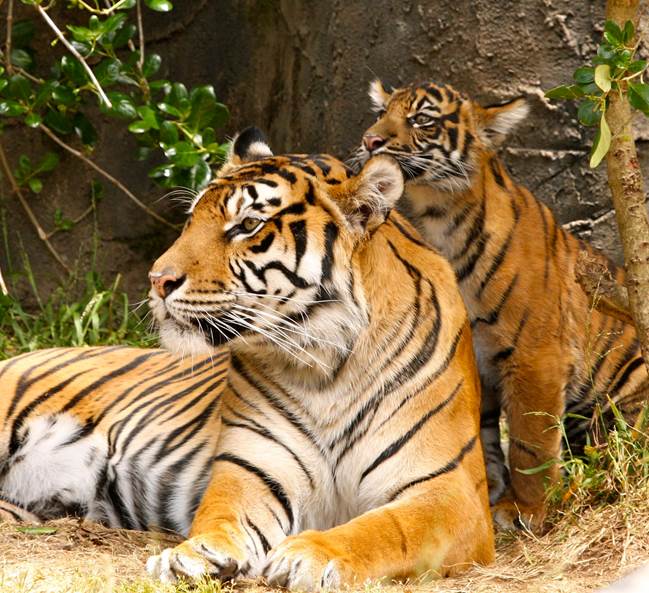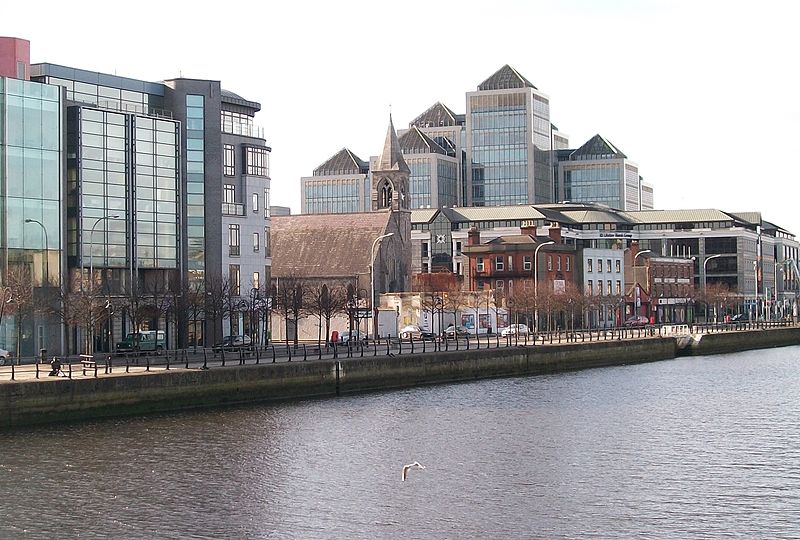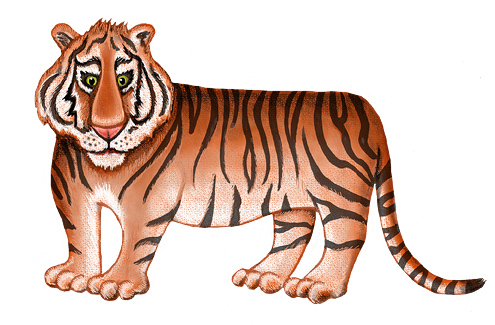 |
| Tea is for Tiger |
Oh my! I found this Level 4 reader while browsing at my local library. Nonfiction books can be a hard sell for beginning readers. Often, the books just rehash the same topics to death or they water down the content to such a degree that they are boring to read. Not so for Lion, Tiger, and Bear. Ritchey tells a heart-warming, high-interest story of how an African lion, a Bengal tiger, and an American brown bear became an unlikely trio of friends.
For tigers, visiting your neighbor is just not as easy as it used to be. Centuries ago, tigers roamed freely across the landscape from India to Indonesia and even as far north as Russia. Today, tigers inhabit is just 7% of that historical range. And that 7% is distributed in tiny patches across thousands of kilometers.
Habitat destruction and poaching has caused serious declines in tiger populations – only about 3,000 tigers remain from a historical estimate of 100,000 just a century ago. Several organizations are concerned with conserving this endangered species. Currently, however, all conservation plans focus increasing the number of tigers. Our study shows that, if we are managing for a future with healthy tiger populations, we need to look beyond the numbers. We need to consider genetic diversity.
Genetic diversity is the raw material for evolution. Populations with low genetic diversity can have lower health and reproduction due to ‘inbreeding effects’. This was the case with the Florida panther – in the early 1990s there were just 30 Florida panthers left. Populations with low genetic diversity are also vulnerable when faced with challenges such as disease or changes in the environment.

Photo by Rachael A. Bay
Luckily for tigers, they don’t have low genetic diversity. They have very high genetic diversity, in fact. But the problem for tigers is that losing genetic diversity happens more quickly in many small, disconnected populations than in one large population. The question is: how can we keep that genetic diversity so that tigers never suffer the consequences of inbreeding effects.
We used computer simulations to predict how many tigers we would need in the future to keep the genetic diversity they already have. Our study shows that without connecting the small populations, the number of tigers necessary to maintain that variation is biologically impossible. However, if we can connect some of these populations – between tiger reserves or even between subspecies – the number of tigers needed to harbor all the genetic variation becomes much smaller and more feasible. Case studies have shown that introducing genetic material from distantly related populations can hugely benefit the health of a population in decline. In the case of the Florida panther, when individuals from another subspecies were introduced into the breeding population, the numbers began to rise.
We do need to increase the number of tigers in the wild. If we can’t stop poaching and habitat destruction, we will lose all wild tigers before we have a chance to worry about genetic diversity. But in planning to conserve this majestic animal for future generations we should make sure those future populations can thrive – and that means trying to keep genetic variation.
Rachael A. Bay is a PhD candidate at Stanford University, and co-author of the paper ‘A call for tiger management using “reserves” of genetic diversity’, which appears in the Journal of Heredity.
Journal of Heredity covers organismal genetics: conservation genetics of endangered species, population structure and phylogeography, molecular evolution and speciation, molecular genetics of disease resistance in plants and animals, genetic biodiversity and relevant computer programs.
Subscribe to the OUPblog via email or RSS.
Subscribe to only earth and life sciences articles on the OUPblog via email or RSS.
Image credit: Tigers at San Francisco Zoo. Photo by Rachael A. Bay. Do not reproduce without permission.
The post Investing for feline futures appeared first on OUPblog.
After many years of extraordinary success the dramatic collapse of the Irish economy in 2008 was unprecedented in the history of post-war industrial countries. Who and what was responsible for the demise of the poster boy “Celtic Tiger?” What lessons can be learned form the Irish debacle and can the Tiger come roaring back?
(1) Until around five years ago, the Irish economy was the envy of the world.
During the nineties, the rise of the Celtic Tiger was one of the most remarkable post-war industrial country phenomena. A relatively poor country on the periphery succeeded in transforming itself into one of the richest countries in Europe. The key was the massive inflow of foreign direct investment, as US and other multinationals sought to take advantage of Ireland’s location and young, well-educated labour force – the only English-speaking country in the common currency euro area. To be sure, sound financial and macroeconomic policies also helped inspire confidence. Ireland experienced annual growth rates of almost 10% at times, living standards soared, and emigration — the hallmark of the Irish – turned into net immigration. Foreigners, especially from Eastern Europe, flocked to take advantage of the booming economy.

Awaiting an upturn in the Irish economy. This section of City Quay between Moss Street and Prince’s Street, surrounded by steel and glass buildings of the Celtic Tiger Era, has been saved from demolition by the severe downturn in the Irish economy. Photo by Eric Jones of geograph.co.uk. Creative Commons license via Wikimedia Commons.
(2) Things then started to go horribly wrong, although it was not recognized at the time.
Starting around 2002, the technology based export led growth began to turn into a property bubble. Fuelled by special tax incentives and unlimited funding at low euro area interest rates, the Irish banks went on a splurge of reckless lending to property purchasers and developers. Government budget expenditures soared, financed by revenues from the artificially booming property sector. House and land prices soared to levels among the highest in the world and the population engaged in a frenzy of borrowing to acquire property before it was too late…
(3) The economy started to collapse around 2008.
In 2008, following the bankruptcy of Lehman Brothers in the United States, the property bubble burst in a spectacular fashion. Almost overnight, prices began to plummet, eventually losing between 60-80% of their value. All the Irish banks became hopelessly insolvent, the budget deficit soared to almost unimaginable heights as the earlier surge in expenditures could not be reversed, and unemployment tripled. The fall in output was probably the largest ever experienced by an industrial country since the Second World War. Ireland quickly found itself unable to borrow on international markets and in November 2010, had to follow Greece and seek ignominious recourse to an emergency bail out from the IMF and the EU.
(4) Much progress has since been made but there is still a tough road ahead.
Under the strict insistence of the IMF/EU, much — albeit painful — progress has been achieved in righting the financial ship of state in the last four years. The enormous budget deficit has been slowly but steadily reduced, and the massive financial problems of the banks have been addressed. But Ireland’s debt has unavoidably continued to soar, and while the economic decline appears to have bottomed out, unemployment remains stubbornly high at around 14% and large scale emigration has resumed. Moreover, it is not clear that steps are being taken to tackle decisively the major failings in political and economic governance that caused the debacle in the first place
(5) Can the Celtic Tiger rise again?
It is very difficult to imagine a return to anything near the heady heights of the Celtic Tiger. Ireland’s economy is very heavily dependent on exports and the EU growth outlook remains very clouded. Increasingly, there are questions as to whether Ireland’s preferential corporate tax regime – key to attracting foreign investment over the years — can be sustained in the face of pressures from other countries. Still, even if real incomes in Ireland return to around their 2000 levels, this would still be an enormous improvement compared to the seventies when Ireland joined the EU as its then poorest member.
Dr. Donal Donovan is a Member of the Irish Fiscal Advisory Council, Adjunct Professor at the University of Limerick, and Visiting Lecturer at Trinity College Dublin. He is a former deputy director at the International Monetary Fund with considerable experience in the area of financial crises. He is co-author, with Antoin E. Murphy, of The Fall of the Celtic Tiger: Ireland and the Euro Debt Crisis.
Subscribe to the OUPblog via email or RSS.
Subscribe to only business and economics articles on the OUPblog via email or RSS.
The post Five important facts about the Irish economy appeared first on OUPblog.
Dorje's Stripes

hello. This guy is looking at his favorite food. You can watch a speed paint video of this on youtube.
 Happy new year. The year of the tiger is about to begin and he is flying in arriving by balloon. This is also a change of medium for me this was done in the computer.
Happy new year. The year of the tiger is about to begin and he is flying in arriving by balloon. This is also a change of medium for me this was done in the computer.
 I finished this illustration just yesterday... I am working on a book and this is one of the finished pages.
I finished this illustration just yesterday... I am working on a book and this is one of the finished pages.

My plan is to quit trying to find a style and 'just do it'. I'm going to draw more animals and landscapes. I'm going to keep looking at other people's art but quit trying to make mine look like theirs. I'm just going to do it.
I started the year off with a drawing of a girl and a cat that my daughter seems to have run off with and then the tiger for a friend.
Oh, and there was a post a while back about drawings we did when we were younger... I found this one that I did in 1993. That would have made me a junior in high school and around 16 years old.
When I copy from someone else's work, I try to copy the signature too so as to give credit where it's due. If I remember right this one came from a greeting card or a calendar. I think it was a calendar. H. GoodwinE

'White Tiger'
I don't do a ton of pro-bono work but this was for a good cause. A Diabetes fundraiser poster with a jungle theme. They asked if I'd specifically illustrate a 'White Tiger' for them.

When I was little, we had a dog named Tiger. He was our first dog. He didn't really like me very much. He bit my hand and I ended up with a couple of stitches.
I love these... have always collected wooden toys for my boys. Nice to have something that doesn't beep or blink, but that stimulates their imaginations.
Thanks for sharing.
Lisa
I love how your art style transfers perfectly to this! Cute and well done. :)
Thank you, Lisa and Andrew!
I found this blog post while surfing and I really like this post. In fact I have a collection of wooden toys at
buy wooden toys for babies